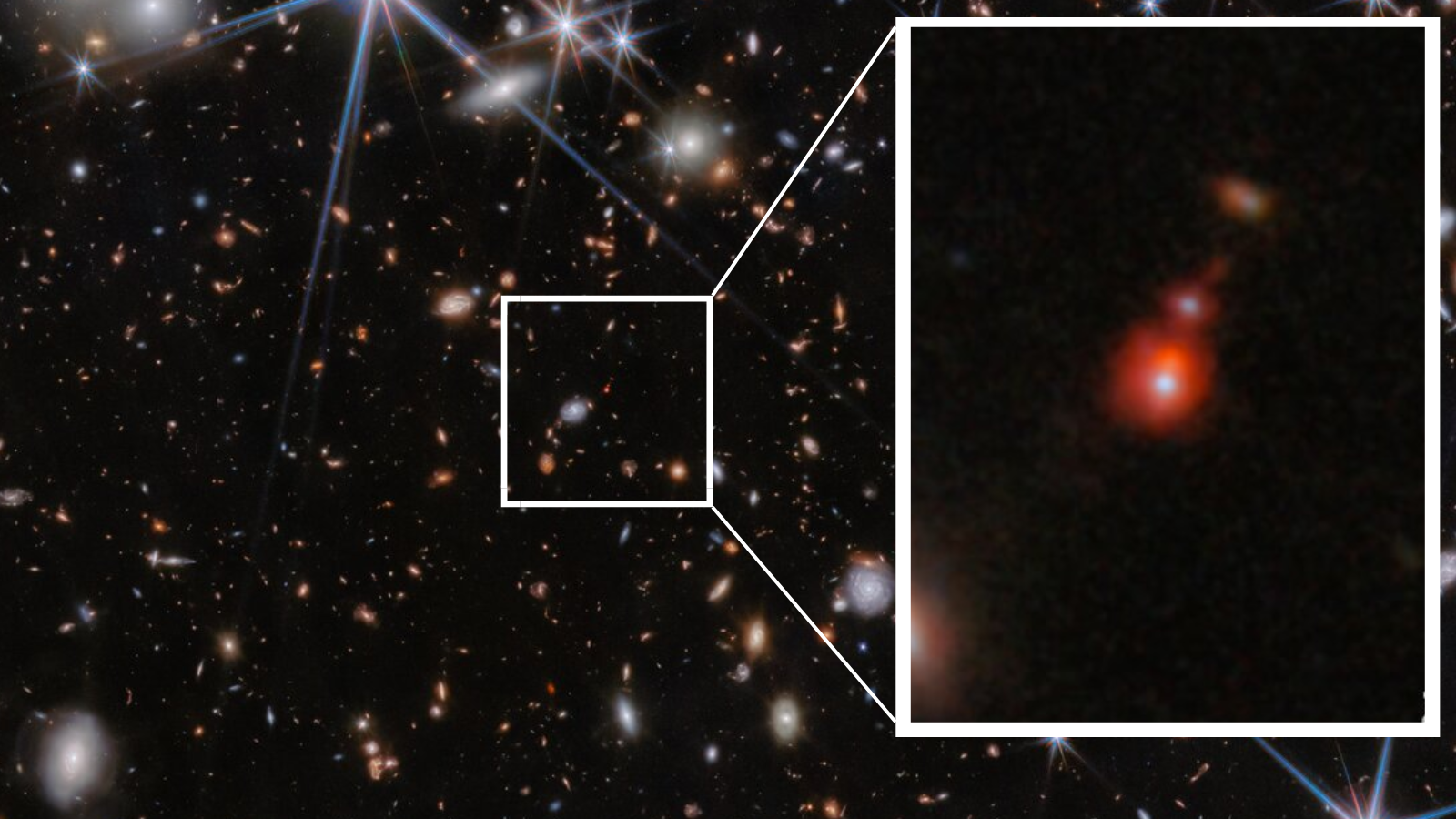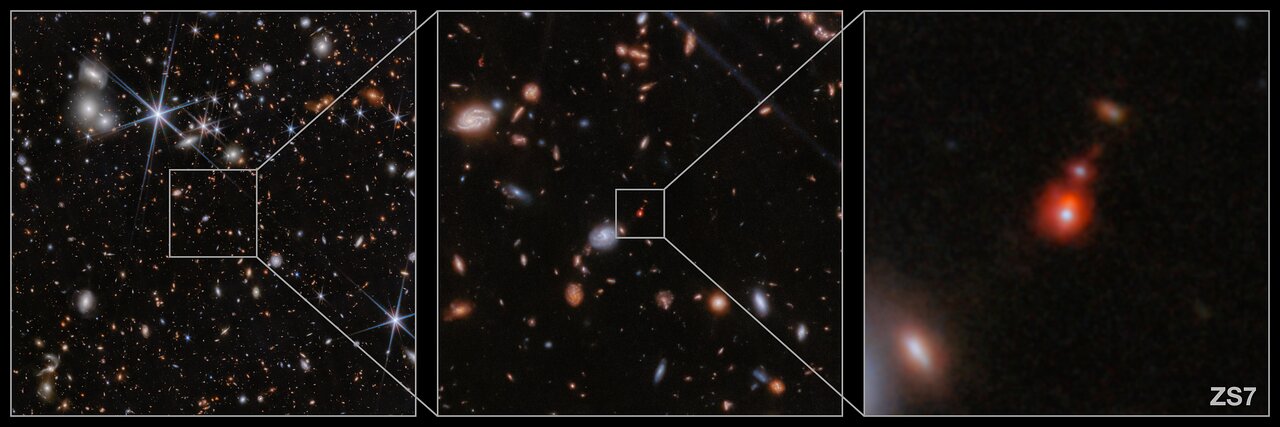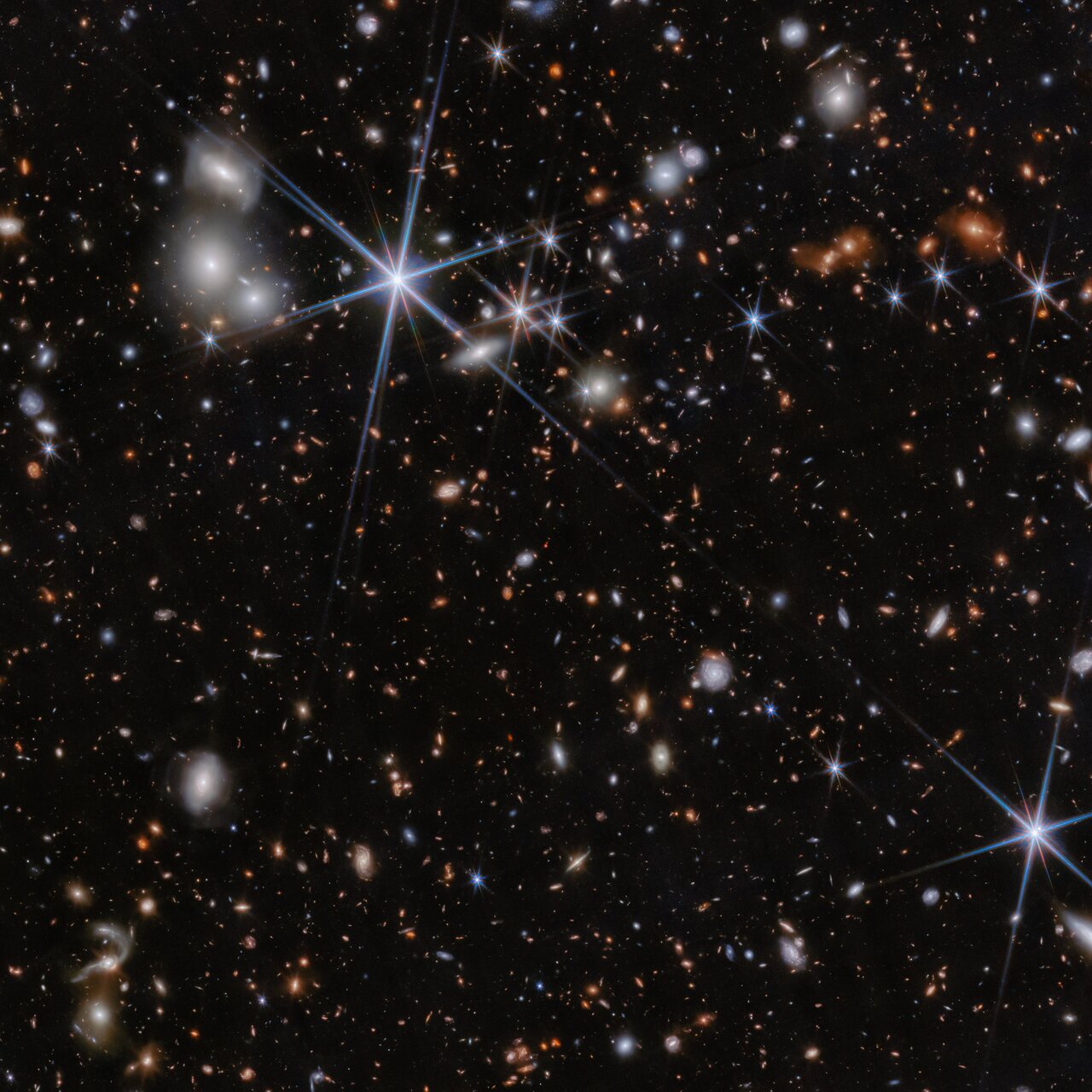James Webb Space Telescope spots most distant and oldest black hole collision ever seen (video)
"Our results also show that massive black holes have been shaping the evolution of galaxies from the very beginning."
Using the James Webb Space Telescope (JWST), astronomers have found the most distant merger between supermassive black holes ever detected.
The colliding black holes are at the heart of merging galaxies that are so distant that the collision is seen as it was happening just 740 million years after the Big Bang when the 13.8 billion-year-old universe was a fraction of its current age.
Astronomers have long suspected that supermassive black holes with masses millions or even billions of times that of the sun, which are found at the heart of most large galaxies, have been responsible for driving cosmic evolution. This new JWST finding indicates that supermassive black holes have been in the driving seat almost since the beginning of time.
The JWST has been regularly uncovering supermassive black holes in the infant universe, which has been a problem because the merger process that facilitates their growth should take periods in excess of a billion years. These results could also help solve the troubling mystery of how supermassive black holes grew to tremendous masses so early in the history of the universe.
Related: Fall into a black hole in mind-bending NASA animation (video)

"Our findings suggest that merging is an important route through which black holes can rapidly grow, even at cosmic dawn," research leader and University of Cambridge scientist Hannah Übler said in a statement. "Together with other Webb findings of active, massive black holes in the distant universe, our results also show that massive black holes have been shaping the evolution of galaxies from the very beginning."
When quasars collide
Supermassive black holes gobbling up matter sit at the heart of what astronomers call active galactic nuclei (AGN). From their central locations, these bright black holes power bright emissions known as quasars that can often outshine the combined light of every star in the rest of the galaxy around them.
Get the Space.com Newsletter
Breaking space news, the latest updates on rocket launches, skywatching events and more!
These electromagnetic emissions feature characteristic features that allow astronomers to determine they originate from feeding supermassive black holes. These features can only be determined by telescopes in orbit around the Earth, and to see them for the most distant quasars takes the extremely powerful and sensitive infrared eye of the JWST.
To investigate merging quasars in the early universe, Übler and colleagues zoomed in on a galactic system around 12 billion light-years away called ZS7 with the JWST's Near-InfraRed Spectrograph (NIRSpec).
"We found evidence for very dense gas with fast motions in the vicinity of the black hole, as well as hot and highly ionized gas illuminated by the energetic radiation typically produced by black holes in their accretion [feeding] episodes," Übler explained. "Thanks to the unprecedented sharpness of its imaging capabilities, The JWST also allowed our team to spatially separate the two black holes."

The team determined that one of the supermassive black holes involved in this merger had a mass equivalent to around 50 million suns. While they suspect that the second supermassive black hole has a similar mass, the scientists couldn't conclusively confirm this because of dense gas surrounding it.
"The stellar mass of the system we studied is similar to that of our neighbor, the Large Magellanic Cloud," team member Pablo G. Pérez-González, a scientist from the Centro de Astrobiología (CAB), said. "We can try to imagine how the evolution of merging galaxies could be affected if each galaxy had one supermassive black hole as large or larger than the one we have in the Milky Way."

When the two supermassive black holes eventually merged, they would have set the very fabric of space ringing with tiny ripples called gravitational waves. These will radiate outward from the collision at the speed of light and could possibly be detected by the next generation of gravitational wave detectors.
This could include the first space-based system, the Laser Interferometer Space Antenna (LISA), an arrangement of three spacecraft being developed by NASA and the European Space Agency (ESA) and set to launch in 2035.
"The JWST's results are telling us that lighter systems detectable by LISA should be far more frequent than previously assumed," the ESA's Lead Project Scientist for LISA, Nora Luetzgendorf, said. "It will most likely make us adjust our models for LISA rates in this mass range. This is just the tip of the iceberg."
Even before the launch of LISA, the JWST will continue to investigate early supermassive black holes. Starting this summer, a program in the $10 billion telescope's Cycle 3 operations will examine the relationship between massive black holes and their host galaxies in the first billion years after the Big Bang. This will include searching for and characterizing mergers.
This could tell scientists at what rate supermassive black holes collide and if this is sufficient to explain their rapid growth in the early cosmos.
The team's research was published on Thursday (May 16) in the journal The Monthly Notices of the Royal Astronomical Society.
Join our Space Forums to keep talking space on the latest missions, night sky and more! And if you have a news tip, correction or comment, let us know at: community@space.com.

Robert Lea is a science journalist in the U.K. whose articles have been published in Physics World, New Scientist, Astronomy Magazine, All About Space, Newsweek and ZME Science. He also writes about science communication for Elsevier and the European Journal of Physics. Rob holds a bachelor of science degree in physics and astronomy from the U.K.’s Open University. Follow him on Twitter @sciencef1rst.
NASA spacecraft spots monster black hole bursting with X-rays 'releasing a hundred times more energy than we have seen elsewhere'
Could we use black holes to power future human civilizations? 'There is no limitation to extracting the enormous energy from a rotating black hole'









